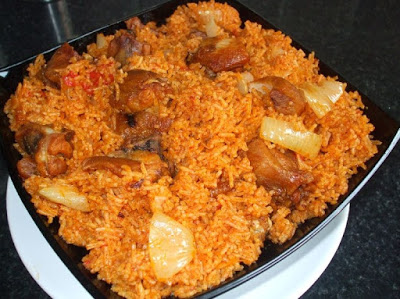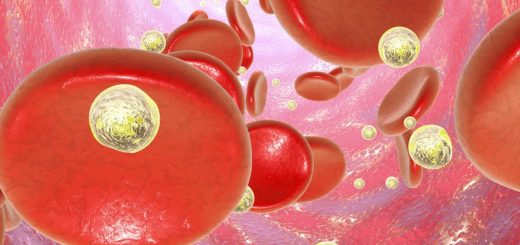Living with Sickle Cell and Eating Healthy
Alright, before I head into the main topic I feel there are some definitions should be know
Nutrition: Nourishment or energy that is obtained from food consumed or the process of consuming the proper amount of nourishment and energy.
Diet: Diet is the sum of food consumed by a person or other organism. The word diet often implies the use of specific intake of nutrition for health or weight-management reasons. Most people seem to confuse diet with restrictive and monotonous foods. This is completely false! Diet is what you eat and drink on a daily basis. So it includes both your normal diet (foods and drinks) and the diet that groups of people consume (hostel diet). A person’s diet can also be customised and used as part of their therapy (therapeutic diets).
Nutrient: a substance that provides nourishment essential for the maintenance of life and for growth.
Meal: any of the regular occasions in a day when a reasonably large amount of food is eaten.
Relationship between Sickle cell and nutrition
Everyone needs adequate nutrition, and it is especially important for people with sickle cell disease. Sickle cell is linked to causing low levels of essential nutrients (or malnutrition) in persons with the disease, which is caused by hypermetabolism. As most of us know Sickle cell causes your red blood cells to breakdown every 8-25 days rather than the average 100-120 days for normal red blood cells. This rapid breakdown causes your bone marrow to produce new red cells faster than average to compensate.

However, this process uses up lots of energy and protein and considerably increases your energy and protein needs. This factor increases your dietary protein and energy needs, which are, in fact, much higher than people with similar characteristics (age, weight, height, physical activity etc.) without the condition. People with sickle cell also have many other nutrient deficiencies aside from energy and protein which lowers immunity, growth and general wellbeing.
Without an optimal diet, your risk of malnutrition, low quality of life and severe, frequent pain crisis increases. Some of the important nutrient that may be deficient in the body includes. Iron, zinc, magnesium, folate, B vitamins, antioxidant vitamins (A,C,E), vitamin D, Omega fatty acids, arginine, Calcium.
Tips to note when starting a healthy eating journey
- Don’t think of what you can remove to make a meal healthy but what you can add to make it healthy.
- If you have reward yourself (have a cheat meal) for eating healthy you are not eating healthy. Eating healthy is fulfilment itself and does require a reward for doing it.
- Don’t see food as good or bad, healthy or unhealthy rather see food for the amount of nourishment it can provide (how much nutrient it has) ie. Nutrient dense and less nutrient foods.
- Keep a food journal
Ways to Develop Healthy Eating Habits
- Get balance: your food should have a balanceed ratio of nutrient. Example carbs 55, protein 30, fat 25.
- Avoid or limit artificial and overly processed foods: fresh and semi package food are more nutrient dense and filling.
- Eat a colourful meal: eating bland food are less appealing to eat and shows how low in a variety of nutrients it is. Having a colourful meals full of natural fresh food to increase nutrient variety in your food.
- Savour your meal: taking your time to slow down to eat and properly chew your food, help increase the nutrient available for digestion and absorption, and make you know when you are satisfied.
Living with sickle cell and eating healthy.
Finding a diet that provides you with plenty of protein and other nutrients can help reduce pain and other complications of SCD.
To Find a diet that increases and balances nutrients, your diet should be balanced and focus on:
1. Whole-grain breads, rice, pastas, cereals and starchy vegetable/plants (Brown rice, potatoes, yams, plantain, sweet potatoes).
2. Fruits and vegetables, especially dark green leafy vegetables. (e.g., pumpkin (ugwu), okra, spinach, water leaf, broccoli, Mango, strawberries, oranges, banana)
3. Proteins (e.g., Fish, legumes, lean meats, poultry, legumes, fish),
4. Nuts and seeds (e.g., Almonds, cashews, sunflower seeds, pistachios)
5. Dairy and dairy products (milk, cheese, yogurt)
6. Healthy whole fats (e.g., avocado, coconuts, olives)
7. Water.
Try to have foods from different food groups each time you eat during the day. This can help you maintain the right levels of all essential nutrients.
Building a healthy eating habits as a sickle cell warrior
1. Know your food triggers and get rid of them: know what food that may lead to crisis and avoid them.
2. Drink enough of water: If drinking water is hard for you, build a routine or infuse with natural fruits.
3. Make sure you eat 3 times a day with a snack in between each meal
4. Make sure you eat fruits and vegetables everyday
5. Take calorie high snacks
6. Replace sodas and sports drinks with whole milk or juices
7. Make spices your friend: cooking with spices boost appetite and improve nutrient profile of any meal
You can find nutrient and calorie dense nutrition recipes in cookbooks, like the the healthy warrior’s cookbook by bukola bolarinwa. This can not be over emphasized, Drink plenty of water, Hydration helps prevent blood cells from sickling. It is important to stay hydrated, especially during exercise or in high temperatures.
Sources:
Put together by Godwin Idiovo Registered Nutritionist
Published by Audrey Mukoro




Cheers!
🙂